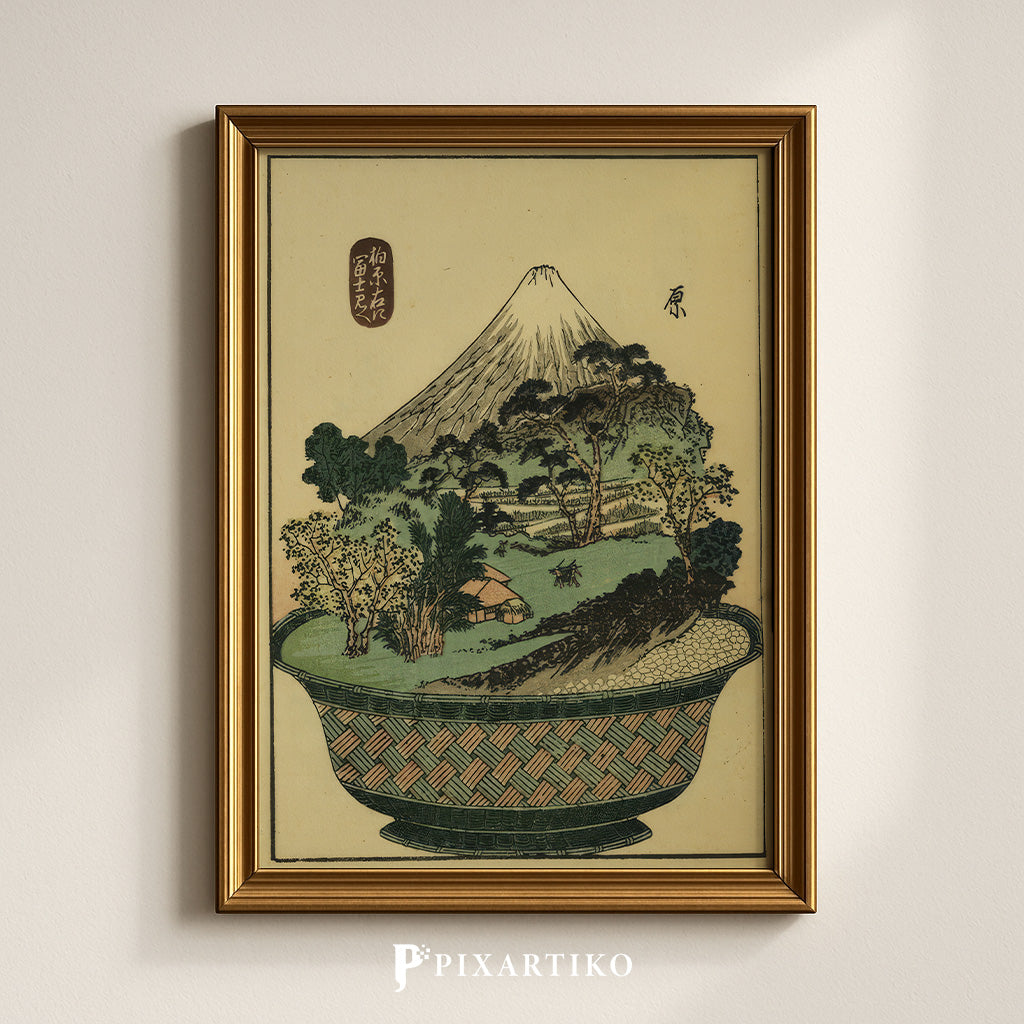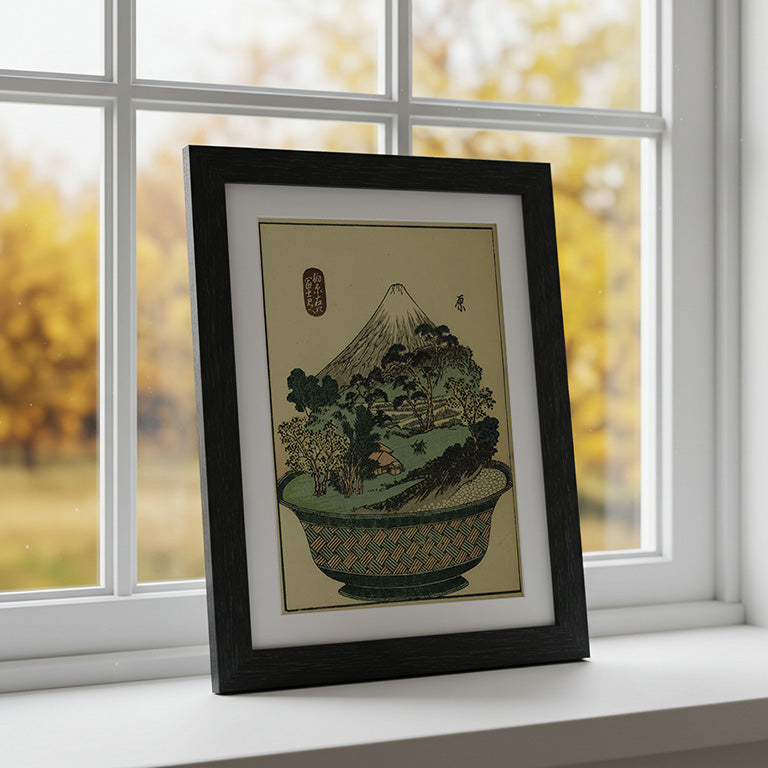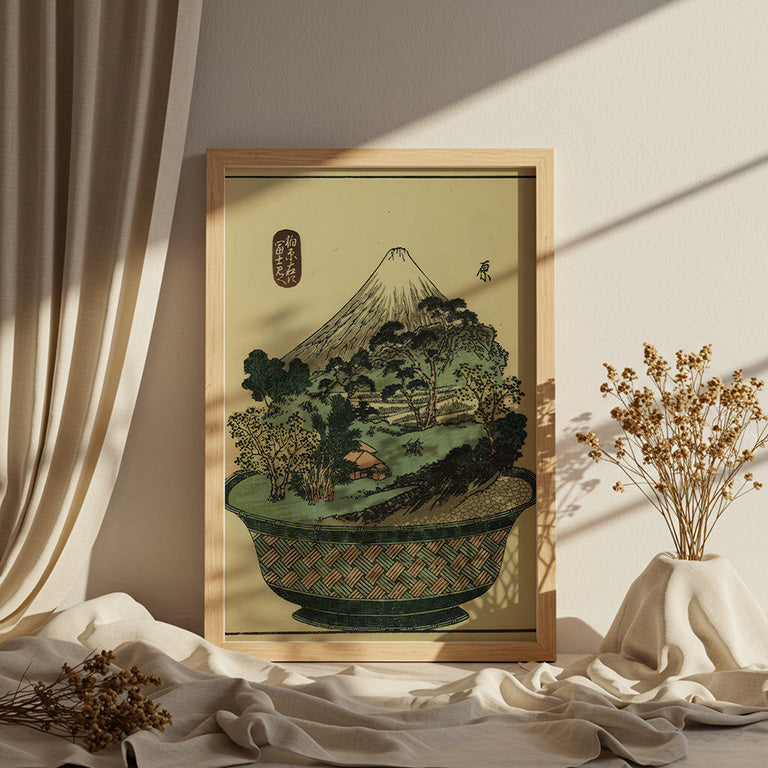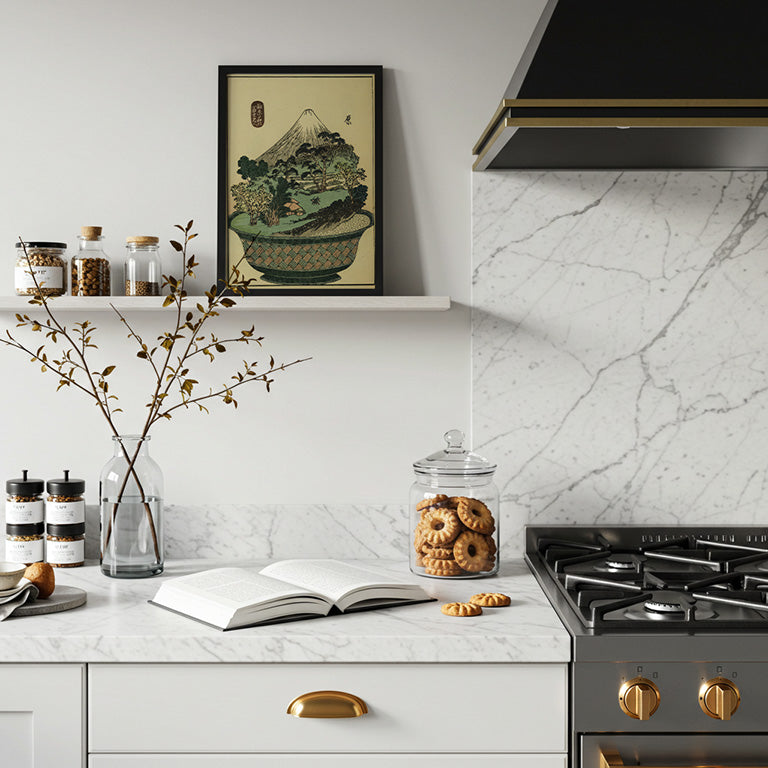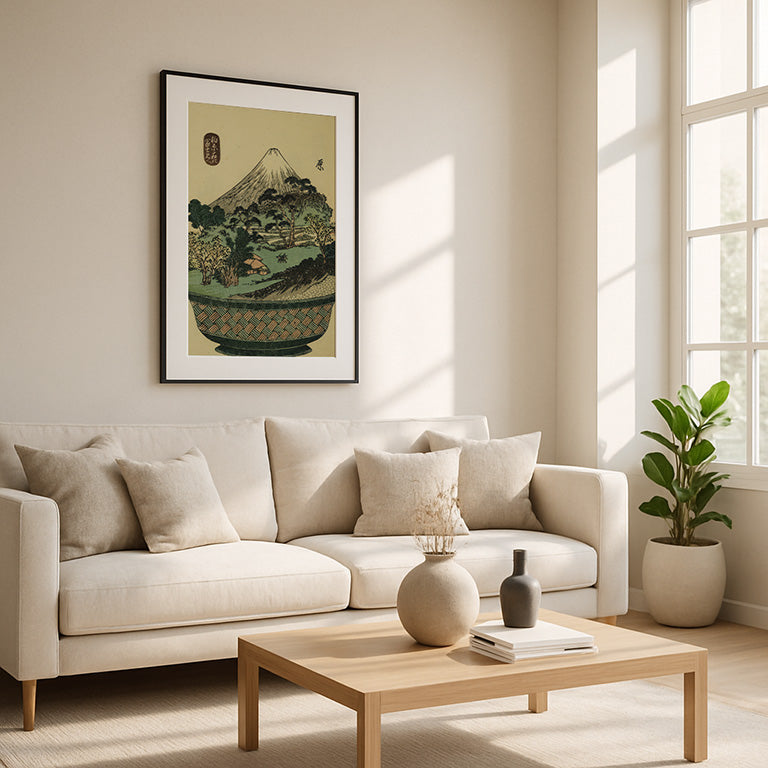"Hara – Miniature Mt. Fuji" | Japanese Vintage Landscape
"Hara – Miniature Mt. Fuji" | Japanese Vintage Landscape
No se pudo cargar la disponibilidad de retiro
Japanese Vintage Landscape Art Print | Digital Download from Tōkaidō Series (1848)
Experience the charm of Edo-period artistry with Miniature Mt. Fuji – Hara, a striking ukiyo-e print from the 1848 collection 53 Stations of the Tōkaidō as Potted Landscapes. This digital artwork features a lush countryside scene with rice fields, village huts, and towering trees—all cradled inside a decorative bonsai pot with the majestic Mt. Fuji rising behind. A poetic blend of Japanese nature, miniature fantasy, and traditional landscape art.
Perfect for fans of Japanese wall decor, Mt. Fuji art, and printable vintage woodblock prints.
➤ High-resolution digital file
➤ Ready for instant download and print
➤ Ideal for gallery walls, Japanese-themed interiors, or as a unique gift

Pixartiko Collective – Usage License
Prints allowed for personal use and resale only as physical products in local shops. Use in other physical goods permitted if pixartiko.com is credited when possible.
Digital resale, sharing, or publishing is strictly forbidden.
Designs are not public domain and cannot be distributed online.
© pixartiko.com – All rights reserved.
Print Sizes
🖼 Included Print Sizes (No Cropping Needed)
This high resolution digital file is optimized for printing at the following standard sizes, no cropping or borders required. Just download, print, and frame:
| Inches | Centimeters | Suggested Use |
|---|---|---|
| 20 x 30 | 50.8 x 76.2 | Gallery posters, premium wall art |
| 16 x 24 | 40.6 x 61.0 | Exhibition prints, home decoration |
| 12 x 18 | 30.5 x 45.7 | Standard posters, frame-ready prints |
| 10 x 15 | 25.4 x 38.1 | Photo enlargements, studio portraits |
| 8 x 12 | 20.3 x 30.5 | Portfolio prints, photo books |
| 6 x 9 | 15.2 x 22.9 | Small art prints, promotional material |
🖨️ All sizes are print-ready at 300 DPI, maintaining the original image ratio. No cropping or borders required.
📂 Your download includes:
- 1 high resolution JPEG file (Aspect Ratio: 2:3 - Portrait).
- Artistic Declaration Certificate in PDF.
- Free gift: The Ages of Painting guide — a visual journey through the history of painting.
🎨 Need a different size or format?
No problem! Just send me a message and I’ll be happy to adapt it for you.
🎧 Art Review
“Hara”, from the series 53 Stations of the Tōkaidō as Potted Landscapes.
Utagawa Yoshishige, ca. 1848
In Hara, one of the most striking entries in Utagawa Yoshishige’s visionary series 53 Stations of the Tōkaidō as Potted Landscapes, the artist offers us not merely a scene, but a cosmos of proportion and reverence. Rendered with meditative elegance, the image stages one of Japan’s most iconic views—Mount Fuji rising with solemn majesty—within the confines of a patterned ceramic tray. The result is not a diminution of nature, but its distilled essence.
Yoshishige’s Hara captures the archetypal Japanese ideal of harmony between human life and the land that sustains it. The snow-capped Fuji presides over a serene rural tableau, where rice fields ripple gently beneath sparse trees and a pair of thatched dwellings nestle amid flowering groves. A solitary traveler and a farmer in motion hint at daily rhythms, yet their scale never threatens the grandeur of the landscape. Here, even the monumental submits to balance and quietude.
What is extraordinary about this work is its layered dimensionality. While the composition exists in two dimensions, it evokes a world that breathes. The framing device—the ceramic basin with woven motif—suggests domesticity and control, yet the image it holds seems to transcend both. It is a landscape remembered, imagined, and revered all at once.
As with the best examples of Edo-period landscape art, Hara does more than represent geography. It spiritualizes it. Through Yoshishige’s delicate lines and earthy pigments, this miniature world becomes an altar to timelessness. We are reminded that the journey through the Tōkaidō was never just about physical travel, but about how we frame and carry the world within us.
In Hara, Yoshishige achieves a rare balance: a composition of quiet power that asks the viewer not to look harder, but to look longer.

Share
